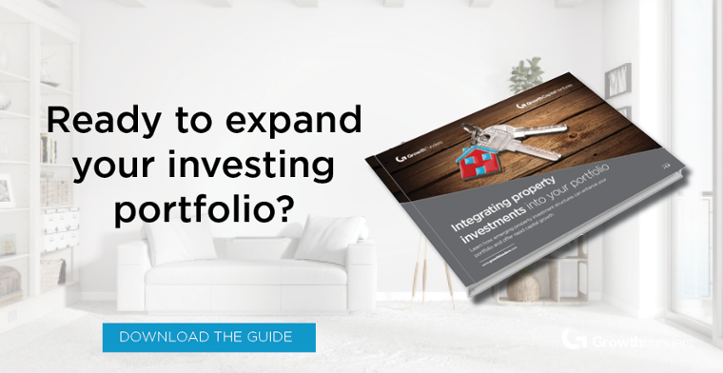An introduction to property investing: residential vs commercial
In my last comparative ‘an introduction to property investing’ piece, I looked at the difference between direct and indirect property investing, and how they both have their merits depending on your focus and requirements as a property investor.
Today I want to continue with the series and look at one of the main decisions you'll need to make at some point in your property investing career - exploring the difference between residential and commercial property investing.
Investing in the country's housing, offices and beyond
Property investing can be as flexible or as structured as it needs to be to suit the investor and fit seamlessly into an investment portfolio. The varied options available in the property investing sector mean you can tailor your investments within a portfolio to return income and/or growth in the short, medium or long term. This means that property investing can be assembled within a portfolio to match an investor's risk profile and desired returns structure.
Whilst residential property investments and commercial property investments can be two very different types of assets, they also have some very notable similarities. Consequently a balanced portfolio can include both residential and commercial property investments, just as a diverse portfolio can - and it's therefore key to understanding the differences to ensure you're making the right property investments for your portfolio requirements.
Residential property investing
An ever growing and demanding market, as we detailed in our piece on the Autumn Budget and the housing crisis, the requirement for residential property has continually increased, something that's been particularly obvious in the rental market. The UK isn’t building enough homes, which therefore keeps prices higher and which has affected affordability, in turn driving the need for rental properties as homeowners struggle to access mortgages.
Whilst it's often felt investing into residential property is done so primarily for income - think buy-to-let - the reality is there are investment opportunities suitable for both growth-focused and income-focused opportunities.
As a result, there are several ways investors can get involved in residential property:
- Property crowdfunding: many property developers are now allowing investors to access the residential property investing market by taking on crowdfunded capital alongside senior bank debt to fund the purchase of land and/or build out of a project. This structure enables an investor to contribute towards the housing crisis whilst investing in asset backed opportunities for a targeted growth return in a relatively short term timeframe.
Importantly, as the investment is effectively shared between multiple investors, and investors can divide their capital between several schemes, the risk related to having all available capital in one scheme is mitigated.
- Buy-to-let: generally speaking, buy-to-let properties are owned by individual landlords (investors) and rented to tenants delivering a monthly rental yield. An investment of this type may also deliver capital growth upon it being sold. For many years, the largest benefit of buy-to-let properties was the rental yield and tax reliefs which accompanied the ownership of the property.
However, since the change in legislation, the biggest return moving forward will most likely now be found from the potential increase in property value - but this can be outweighed partially, or indeed fully, by the need to keep the property well maintained, manage the tenants and ensure all financial commitments are met.
- Student accommodation: a form of buy-to-let property, student accommodation includes investing into a property to rent out to students as a whole, or indeed as smaller units. The benefits of student accommodation is that as long as it’s close to a well established university or place of higher education, there will always be the demand and the supply of potential tenants.
Moreover, because of the profitably of high yields and low void rates, the student property sector attracts many investors of all scale. However, this type of investment can suffer from similar downsides to the traditional buy-to-let properties in that the purchase, maintenance and management of the units can be time, labour and cost intensive.
- Off plan: buying properties off plan from the builder comes with a certain amount of risk, but if the market and specification is well researched and favourable to the investor it can also be a very lucrative way to buy property.
Embarking upon this route means you place a deposit on the property one to two years prior to completion and acquire it at a reduced rate from the builder. Then, depending on the requirements of the investor - or indeed the market conditions - you can then pay the remaining balance of the property on completion, or sell the property on completion and make a profit should the value have risen in the time between commitment and completion.
- Refurbishment: some investors taking a more hands on approach want to buy properties to refurbish and sell on to then generate a profit. These property developers - or investors - will often buy their first property and renovate for a profit, which is then used to fund the renovation of the next property. This consequently becomes a cycle of invest, renovate and sell - a more medium to long term investment strategy in compariosn to some other types of residential investing
An important piece of information to keep in mind here is the investment options mentioned above are generally most attractive to the individual investor or smaller syndicated investment groups. Although available to sophisticated and institutional investors, these larger-scale investors are often more likely to either buy an established portfolio of managed and varied properties, or invest through a particular scheme - think PRS (Private Rental Sector) Developments or REITs (Real Estate Investment Trusts) - which I'll be exploring in more depth in a future post.
Commercial property investing
Whilst similar in principle to residential property as an investment asset, returns on commercial property are typically more closely tied to economic prosperity. Consequently, the market for commercial property is usually a good indicator of business and investor confidence in the economy.
As such, although the different types of commercial property operate in a relatively consistent way, the demand and returns for the different classes can vary depending on the supply, demand and needs of the economy and local businesses.
There are typically three types of commercial property available to investors - office, industrial and retail - but some opportunities will cover a combination of two or three. This is typically when a full complex - or a portfolio of commercial properties - is acquired, which mitigates some risk for an investor as opposed to investing solely in one type of commercial property.
- Office: graded by desirability, which usually consists of specification and location, a very desirable A grade investment opportunity would have a premium location (think city centre) and high specification, including features such as climate control and high speed broadband, within its facilities. B grade spaces could have the same features but be in a less central location, whilst C graded space is the cheapest, but without the desirable location or facilities to offer.
Many people believe the grade of office will only affect the end user, but in reality the grade of the office affects the investor - due to the initial cost of the investment, the yield that can be expected and the longevity of the returns period. The state of repair is key to this also, as a well maintained office space will deliver longer term investments and is more likely to have a favourable resale value as opposed to a rundown property that will require larger amounts of capital and is unlikely to be ‘rentable’ long term.
- Industrial: units of this type are typically populated by logistics and manufacturing businesses and have a certain requirement due to this. Industrial property isn’t desirable in the same way as offices, graded by location and facilities, but is graded by its access to transport infrastructure, size of the space/footprint and neighbouring businesses. Moreover, industrial units have a lower turnover of businesses occupying them as the internal infrastructure established by the occupant is labour, time and cost intensive, as opposed to a call centre business, for example, who could 'simply' pack up their computers and furniture and move office space within a matter of days.
- Retail: retail property developments and opportunities can be as diverse as the retail market itself, with premises varying from a single local post office through to a large retail outlet with several hundred units and leisure facilities. Not often a market entered by first-time property investors - at least not on a direct level - the most lucrative retail investment opportunities tend to occur in the larger scale portfolio acquisitions market, with companies selling full centres, outlets and/or brands to a competitor or institutional investor.
The investment differences
As you can see, aside from the obvious, one of the most notable differences between commercial and residential investing is the type of returns - a growth-focused investor may lean more towards residential, whilst an income-focused investor more towards commercial. This obviously isn’t to say that investments in either cannot deliver both, and from the analysis above you can decipher that returns and structure of investments can not only differ between commercial and residential, but between the types of property within the sectors, too.
As an investor, you must ensure the sector and type of property has the potential to deliver the type of returns - growth, income or both - that suits your portfolio and risk appetite. Moreover, building a diverse portfolio of varying property types can help to alleviate some of the risk and could deliver a variance of return over a longer time period.
%20(3)%20(2).jpg)







